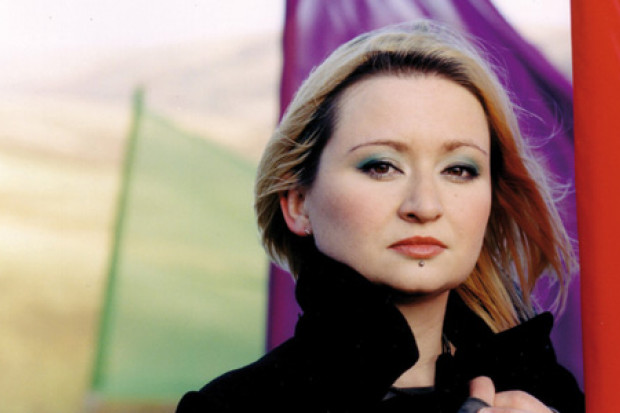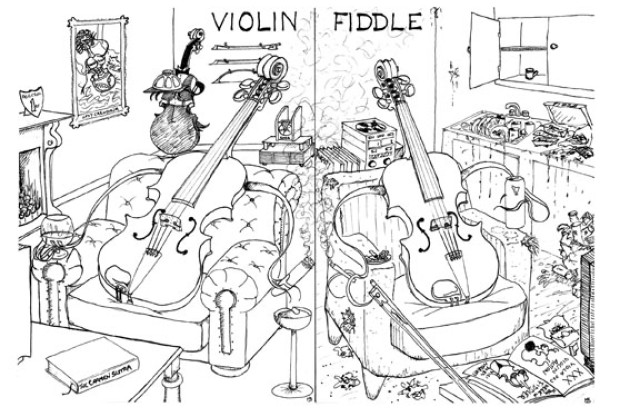Glimpses of the Fuller Picture
One of the really encouraging developments in traditional music in recent years has been the steady rise in professional standards right across the board – from stagecraft to management through to the quality of instruments, levels of performance and production standards. With this heightened mastery of the mechanics of presenting the music, there is always the risk that the small, gritty, idiosyncratic elements that stop it ‘sounding all the same’ will get lost, or elided into something altogether less threatening, safer, sweeter, more easily digested.
And this does happen. What got me thinking about this subject was hearing two relatively recent and refreshingly different albums. The first is Serenade (Compass Records) by fiddle-player Winifred Horan and accordionist Mick McAuley, two excellent musicians who are well known internationally through their work with the band Solas. The second is Music from the Robert ap Huw Manuscript, an album of solo harp music performed by Paul Dooley who plays wire-strung harp. The music on this album comes from what is described as the oldest extant collection of harp music, which dates from around 1613 AD in manuscript form, although some of the music itself can be traced, tenuously perhaps, back to around 1100 AD.
Serenade gives a good insight into the range of Horan’s and McAuley’s musical influences, which include music from Ireland, Cape Breton, French Canada and the Maritimes, with performances too of songs by Neil Young (‘After The Gold Rush’) and Bob Dylan (‘To Make You Feel My Love’). There are well-chosen medleys of reels, hornpipes and jigs (including new and recent compositions), all played with great punch and energy, and they are well supported by Donal Clancy on guitars, bouzouki and mandolin, Chico Huff on acoustic bass, Paul Gurney on electric bass and some additional bass from the endlessly talented Seamus Egan. Serenade also demonstrates technical/production skill and high-quality arrangements, but I’m not really convinced that all of this has served them well. To my ear the overall approach falls a bit short of the promise on the album cover which tells us that McAuley and Horan ‘join forces for the first time as a duo …’
My quibble is with the use of the word duo. The approach taken on Serenade is based on a model or formula that creates very polished, highly crafted arrangements but to the extent that it becomes almost impossible to say if this is a new band album – or is it an attempt at a musical statement by the two main protagonists?
I came away from this album more curious and irked than satisfied. Although the album does display the full battery of technique that is taken for granted these days, the end result is to conceal or merely hint at – rather than reveal – just what players of the calibre of Horan and McAuley have to offer. Instead of getting a clear sense of their individual and joint strengths, I found myself struggling with an almost generic and occasionally derivative sound, and trying not to think of the groups Buttons and Bows, or the American Café Orchestra, or any number of bands in fact. These are no more than matters of taste and preference, but of the many ways to make a duo album, this is one that guarantees only hints and glimpses rather than the full picture.
Getting inside the minds of others
Music from the Robert ap Huw Manuscript by Paul Dooley is at the other end of the spectrum, in fact about as far as we can go – sparse, naked, and minimalist at first hearing – but on repeated listening surprisingly powerful and affecting music. Some of the music I found rather more martial in character than soothing, particularly the 21 minute ‘Caniad Llywelyn Delynior’ which reminded me in structure and effect of classic Scottish píobaireachd, an occasionally complex form which has a repeated theme that is developed and elaborated within relatively fixed musical parameters. Other pieces to my ear had a surprisingly modern feel to them, such as the bagatelle ‘Caniad y Gwyn Bibydd’, which is believed to be a humorous musical picture of how the harpers viewed the pipers. The music itself has more than a whiff of the mysterious to it and, in brief, what we hear on the album is an interpretation by Dooley of a translation – according to seventeenth century instructions – of a form of tablature used by Welsh harpers to record their music in an attempt to preserve it from imminent extinction. The notes to the album, which is sub-titled ‘Volume 1’, give enough detail and information to explain this music and the tablature principles and to locate it all in the cultural traditions of these islands. And there is also just enough information to leave this reader wanting to know more about the process of interpretation and discovery. I listened to the album several times before I looked at the notes, which are very helpful in understanding the nature and magnitude of this cultural enterprise that Dooley is undertaking. I was glad I waited.
Paul Dooley has been following a very interesting path for many years now in making conjectures about what early Irish and related music, and particularly the harp music of these islands, might have sounded like. The proposition that something musical could have existed before the invasion of the pipers and fiddlers who brought with them the reels, jigs and hornpipes that we now cannot live without is, of course, more than just a subversive counter-traditional idea. It is a matter of fact, although the body of evidence to support and substantiate it remains pretty thin on the ground and generally beyond the reach and the ears of most of us. The job that Dooley has set himself requires him to act in turn as detective, palaeontologist, treasure hunter, persuader and musician, and this album gives a clear sense of where his explorations have taken him so far. Through his collaboration with other researchers and musicians, Dooley is setting out his speculations about a wonderful question: what did this music sound like in 1100 or 1600?
The sceptic in me immediately went into overdrive when I started reading the album notes, but I came away satisfied that there is something of substance here. Perhaps the best way to leave it is to quote Dooley’s own words, which sum up perfectly the spirit necessary to undertake a cultural project of this nature with all the risks that hang off every note: ‘Although we can never be certain about the finer points of expression in written music, even with this ancient manuscript, there are many clues to be found if one is prepared to be patient. I spent six weeks on the island of Inis Oírr… recording these pieces, playing them over and over, looking again and again at the tablature. I tried to get inside the minds of the harpers who played this unique music so long ago, and of those who translated this dying art form onto paper with line after line of strange symbols and letters.’ Much art is about trying to get inside other peoples’ minds.
Published on 1 March 2006
Dermot McLaughlin is a fiddle player and currently Chairman of the Irish Traditional Music Archive.














